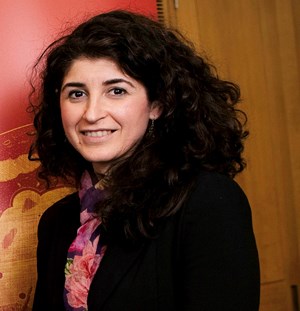Research And Grants

Bambino Gesu Children's Hospital - $49,803
Dr. Mara Vinci
$49,803.00
August 2019
Translational
DIPG
Using imaging mass cytometry to identify next generation imaging biomarkers in PHGG and DIPG.
The field of pediatric neuro-oncology has been greatly advanced by recent studies, which have better outlined the spectrum of pediatric Central Nervous System (CNS) tumors, into more clearly distinct biological and clinico-pathological tumor entities.
Unfortunately, what is still missing, is the consideration of the tumor as a whole, with and within its ecosystem. We and others have largely contributed to highlight the heterogeneity of pediatric CNS tumors. In particular, by using patient derived primary cell lines, we have shown that cancer cells are able to work together as a network and even rare subpopulations are critical for this network to function. What we have not yet been able to do is to map this evidence into the patient tumor tissue, taking into account all the elements of the tumor microenvironment. Why is this so important?
Imagine to have special lenses that would allow you to navigate through the tumor tissue sample, being able to identify the tumor cells, their different heterogeneous subpopulations, their relationships with normal brain cells and their functional states, at the same time identifying the different types of immune cells and all the components of the Blood Brain Barrier (BBB).
Our project aims at applying a novel, state of the art technology, called Imaging Mass Cytometry (IMC), that, coupled with computational analysis, will enable us to identify novel and much needed clinically relevant imaging biomarkers. In IMC, tissue slices are stained with special antibodies that differently from the standard ones, are not linked to a fluorescent protein but to a metal. Once the tissue is stained, it can be processed in a special instrument, where selected areas of interest are scanned by a laser and the metal-coniugated antibodies, are released. The physical and chemical properties of those antibodies allows the exceptional simultaneous staining with up to 40 antibodies for each experiment. They can be quantified so that expression and abundance of all the markers is provided without losing information regarding their spatial distribution.
In this proposal we will focus on a group of highly aggressive and heterogeneous pediatric CNS tumors, which include pediatric High-Grade Glioma (pHGG) and Diffuse Intrinsic Pontine Glioma (DIPG), with a very poor outcome and no effective treatment so far.
We will employ a platform with a large panel of specific tumor and brain microenvironment antibodies that will be used to stain biopsy, resection and autopsy samples, including samples collected from different regions and at different time points of tumor progression. When used simultaneously on the same tissue section, it will enable us to identify at the same time all the different components of the tumor ecosystem, allowing us, for the first time, to fully read through tumor tissue samples from pHGG and DIPG, identifying unique diagnostic and prognostic biomarkers in those aggressive pediatric cancers.

